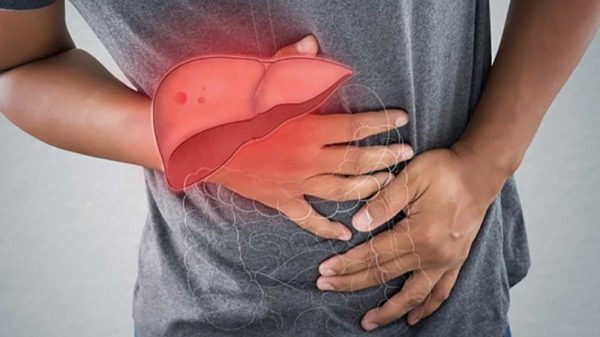A number of health conditions can lead to significant distress and reduced quality of life for most individuals. While some of these health conditions can be minor and easily managed by home remedies, there are some diseases that are considered severe or major. One such severe illness is known as liver disease which can be characterized by cirrhosis or scarring of the liver. This scarring can lead to a condition known as jaundice or the skin and the white of the eyes turning yellow. But what is jaundice? What are the different types of jaundice and their possible causes? We answer these questions in this article so read on to find out more!
Jaundice: A General Overview
Jaundice refers to the white of the eyes and skin having a yellowish color or shade. Aside from the eyes and the skin, certain bodily fluids may also turn yellow. The whites of the eyes and the color of the skin will be different for each individual based on bilirubin levels. The blood’s waste material is referred to as bilirubin. Levels of bilirubin that are moderate have a tinge or shade of yellow while those that have increased levels of bilirubin may have a color that is brown.
In the United States, more than half (around 60%) of children born have this medical condition. It must be noted though jaundice can occur to individuals regardless of age and normally dependent on the underlying cause of the condition. Having jaundice may be an indicator that the individual has either a bile duct or liver issue.
Possible Causes of Jaundice
The yellowish shade of color brought about by jaundice occurs once the human body is unable to properly process bilirubin. This will usually be caused by a liver problem. Jaundice is also referred to as icterus. The yellow-colored waste that stays behind in the blood is bilirubin. This happens after the removal of iron from the bloodstream. The waste can be extracted from the liver and once bilirubin enters the liver, different substances can get attached to it. This can result in a substance known as conjugated bilirubin.
The liver is responsible for the production of bile which is a type of juice used for digestion. The bile is then mixed in with conjugated bilirubin which will then be excreted by the body through fecal matter, hence, feces’ predominant color which is brown. If it is confirmed that excess in the levels of bilirubin, it may spread out to the tissues and this condition is called hyperbilirubinemia which can lead to eyes and skin turning a shade of yellow.
What are the Risk Factors of Jaundice
The condition known as jaundice occurs when the liver is unable to get rid of the waste material bilirubin or when an underlying condition results in increased or excessive bilirubin production. Both these conditions can lead to bilirubin penetrating the tissues and getting deposited there.
Some of the common risk factors for contracting jaundice are:
- Cholestasis- This is a condition that can disrupt bile flow coming from the liver. The conjugated bilirubin contained in bile stays behind in the liver without being taken out.
- Gilbert’s Syndrome- This form of the condition is inherited which can lead to an impaired enzyme ability to continue the bile’s excretion process.
- Hemolytic Anemia- Bilirubin production can increase when increased levels of blood cells (red) go through a breakdown process.
- Bile Duct Obstruction- This kind of condition can contribute to the liver being prevented from excreting bilirubin.
- Bile duct inflammation- This can have the bile removal and secretion prevented resulting in jaundice.
- Acute liver inflammation- This can lead to the impairment of the liver in the conjugation and secretion of bilirubin which can lead to waste accumulation.
Other conditions that are considered rare are:
- Pseudojaundice- This kind of jaundice is considered harmless as the yellow tinge of the skin is not caused by bilirubin but by increased levels of beta- carotene. This condition can be due to eating a lot of melon, pumpkin, and carrots.
- A Syndrome is known as Dubin-Johnson – A form of Jaundice that is chronic that can be inherited which leads to bilirubin that is conjugated being prevented from the secretion from the liver’s cells.
- Crigler-Najjar Syndrome- A form or type of condition that is also inherited which can lead to the impairment of a certain enzyme that processes bilirubin.
The Different Jaundice Types
Jaundice has three different types. These are:
- Hepatocellular jaundice happens due to injury to or disease of the liver.
- Hemolytic Jaundice happens due to red blood cells’ speed up breakdown process resulting in bilirubin’s increased production.
- Jaundice that is obstructive can occur due to bile duct obstruction. This can result in the bilirubin being taken out of the liver.
Treatment of Jaundice
Jaundice treatment will be based on what caused jaundice in the first place. In short, treatments for jaundice will try to address the condition that caused jaundice itself instead of symptoms of jaundice. Some of the treatments that can be utilized for jaundice include:
- Anemia induced jaundice: Boost blood iron content through Iron supplements or Iron-rich diet.
- Steroidal or antiviral medication for jaundice caused by hepatitis.
- Surgery for jaundice caused by obstruction.
- A change of medication is required for jaundice caused by a current prescription drug.
Possible Complications of Jaundice
Jaundice may be accompanied by itching that to some patients can be so extreme that they may scratch the skin excessively, resulting in poor quality sleep, and in some instances even contemplating suicide. Complications may occur but it will mostly be the result of the actual condition itself and not by the symptoms of jaundice.
One example is if a bile duct that is obstructed caused jaundice, then bleeding that is uncontrollable may be the complication.























